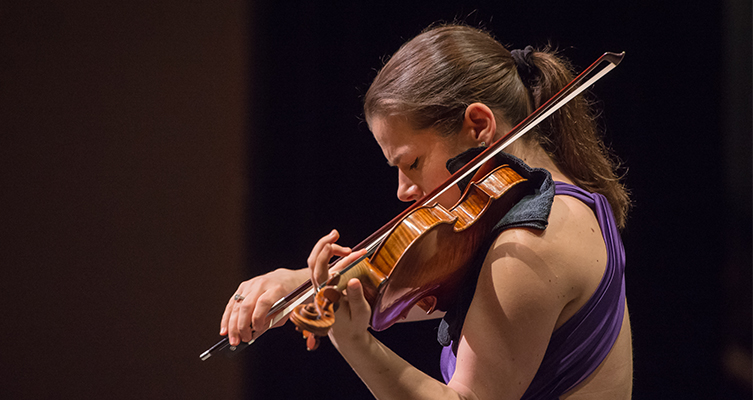
MIRACLES IN MENLO, BY WAY OF THE DANUBE
MENLO PARK, CA—The Menlo miracle is that for three weeks every summer, a dozen or so musicians turn out on any given date and play repertory well into the night, despite the summer doldrums all over. Instead of repeating the overplayed potboilers, it’s about presenting unfamiliar chamber works by name composers of the 20th century in very creative programming indeed.
The July 31 foray to Budapest by Music@Menlo featured the crack Calidore String Quartet as well as Anthony McGill, clarinet principal of the New York Philharmonic, in a cameo returnee role. The level of play was extraordinary, even if the performances this night were less compelling, though consistently refined technically.
The most animated performance of the night came on Zoltán Kodály’s Duo for Violin and Cello, featuring Bella Hristova beautifully integrated with the cello sound of Nicholas Canellakis. This was passionate music from a century ago, volatile and impulsive, in minor keys so beloved of Hungarian composers, with a few thunderbolts along the way. The instruments ran the gamut from dialogues to tightly locked Brahms-influenced duet work. Hristova’s play was downright soulful.
The piece de resistance July 31 was Béla Bartók’s eminent String Quartet No. 5 (1934) an opus that, if not truly beloved, is highly respected. If his six quartets are the Himalayas of Hungarian chamber music, the Fifth is arguably Mt. Everest. And, like Everest itself, it’s no walk in the park.
You have to believe that Bartók’s thorny creation was affected by the clouds of World War Two already on the horizon; it is troubled, abrasive, agitated. It also reflects Bartók’s supreme attention to musical architecture, set pyramid-like in five neoclassical movements, with the midpoint Scherzo at the peak. The only respite comes in the subdued “night music” of the 2nd and 4th movements.
The Calidore String Quartet was itself intense, taking the bull by the horns, showing the fruits of long rehearsals.
Late romanticism entered via the pretentious, inconsistent Dohnányi Sextet for Winds, Strings and Piano (1935). It’s a plodding work with flashy effects, plus salon music, Gershwinesque jazz themes and Viennese waltzes. His repute back in Hungary was that Dohnányi (1877-1960) was a much better pianist than composer. Based on this opus, you’d tend to agree. He was however the only one of these composers with extensive US residency, having spent his later years on the faculty of Florida State Univ.
A short work for two violins was also on the docket, by György Ligeti, best remembered by film addicts for some 28 minutes of his galactic choral music pirated for the movie “2001, A Space Odyssey.” Give the movie producers credit: They picked a perfect score for their space-travel scenario’s ambiance!
Music@Menlo, a chamber music festival in its 16th year, through Aug. 4, in both Atherton and Menlo Park. For info: (650) 331-0202, or go online.